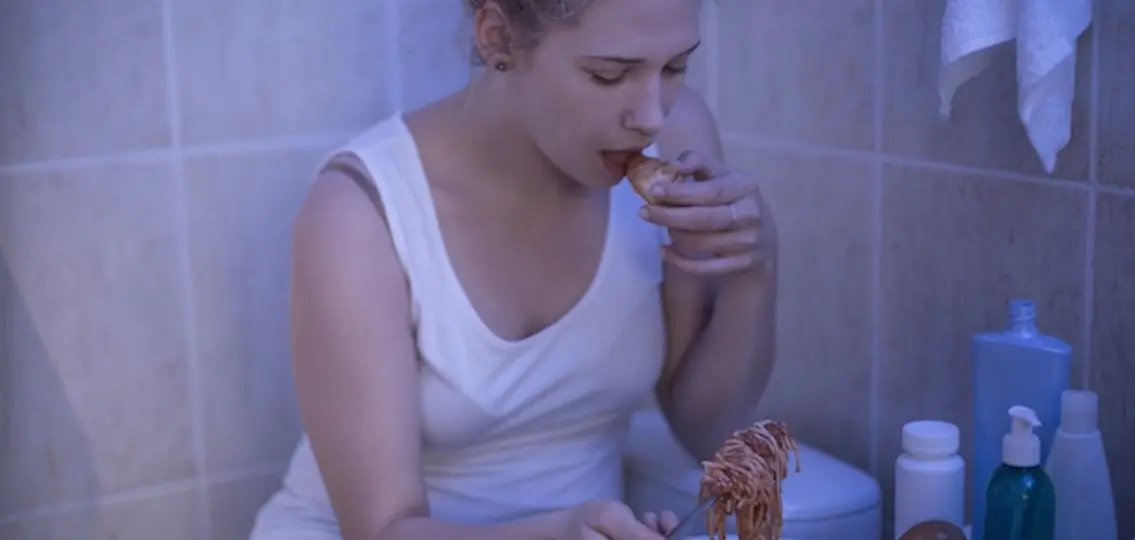Baby’s first-word reflects her truest love. Most babies utter mama or dada. My daughter was not like most children. Her first word was cracker. Blissfully unaware of what this foretold, I found it adorable.
My daughter’s feelings for crackers went beyond basic love.
She cherished and craved them. She couldn’t live without them. Crackers triggered love of all simple carbohydrates.
Not long after her first steps, she taught herself to open cabinet doors. Proud of her self-sufficiency, I imagined sleeping late on weekends while she prepared breakfast for her older sister and herself.
My dreams of leisurely mornings in bed came to a screeching halt once I noticed the empty food packages lining our pantry shelves. Even the brand new five-pound bag of sugar I used to refill the mysteriously emptying sugar bowl was a crushed empty sack.
Over the years, more foods than just sugar went missing. Boxes of taco shells, sacks of bagels, bags of bread, entire pizza crusts, packets of oatmeal, sleeves of saltines—all gone.
We thought her capacity to eat huge amounts of food was funny. We told friends and family humorous anecdotes of her love of food.
Then it stopped being funny.
She complained of belly aches. Her weight ballooned. Our grocery bills skyrocketed. Nobody else in the house could find snack or breakfast foods. We were becoming hangry.
To combat her food obsession, we taught her about nutrition and portion sizes. We modeled healthy eating. We consulted doctors and psychologists, none of whom had answers.
So we hid foods. She found them. We found new and better hiding places. She found those. We had so many hiding places we couldn’t find the foods.
We stopped buying snack products. She started eating raw pasta and bread dough. We gave her small portions of candy. She used her birthday money to buy cookies at the corner store. We cut out snacks. She made herself meals in the middle of the night. I pitched the sugar bowl. She ate the powdered sugar.
Nothing helped end her binges.
Then, one day I found no more empty packages. She suddenly stopped binging! I believed this until a search for missing earbuds revealed the truth. When I opened her closet door, an avalanche of empty food packages tumbled to my feet. Enraged, I ransacked her room, uprooting the remnants of granola bars, goldfish crackers, and candy bars. She ate all the food I thought the family was consuming.
Overcome with intense feelings of helplessness, I crumpled into tears.
We tried reasoning with her. She couldn’t comprehend our logic. We praised her good choices—that triggered binging. We employed consequences and took her money. And we put in spy cameras.
Nothing changed.
Under the supervision of her developmental pediatrician, we altered her diet and started supplements. We managed her anxiety and emotional dysregulation with Zoloft. We employed cognitive behavioral therapy for her impulse control disorder. Finally, we also began to embrace and address her possible mild autism spectrum disorder.
We did everything we could.
Then, she nearly burnt the house down while microwaving mac and cheese in the middle of the night.
We had to admit that she had an unusual eating problem: binge-eating.
I reached out to professionals. Her therapists and doctors were unclear on how to diagnose or treat binge eating as the DSM-5 had only recently recognized it as an actual medical diagnosis.
I contacted our children’s hospital eating disorders unit to request an evaluation. After a lengthy phone interview, the counselor offered a spot in a therapeutic group for teens with anorexia. This was not what my young, sensitive, and impressionable girl needed.
The counselor concurred.
Instead, she referenced several useful sources. Armed with these books and websites, I enlisted a cognitive behavioral therapist. She accessed the information learning the best treatment to help my daughter.
Using the protocol outlined in Overcoming Binge Eating by Christopher Fairburn, we logged the foods she ate, documented her emotions and thoughts about eating, identified binges versus regular eating, scheduled her days so she had less downtime, and planned meals and snacks vigilantly. These logical and doable steps for most were too challenging for her.
After two months, she was frustrated and sad with her inability to stick to the program. She needed to understand what being a binge eater meant, identify as one, and accept it. Her delayed emotional development and cognitive skills wouldn’t allow her to fully process the complex information.
We made the hard choice to step away from the program until she matured enough to handle the responsibility of taking control of her urges.
Now we rely on daily talks about what she is feeling and thinking. We remind her to be healthy by eating nutritious foods and exercising. We validate her experience by relating our own experiences. And we lock-up all the tempting foods portioning out reasonably sized snacks.
Through this exhausting journey, my emotions have run the spectrum from amused at her love of sugar, to anger, to worry, and to sadness. I regularly cycle through these feelings, sometimes all in a single day. We haven’t given up on her. Her days of independence are creeping closer.
Until then, I’ll continue to miss my sugar bowl.




